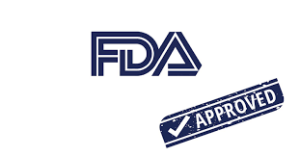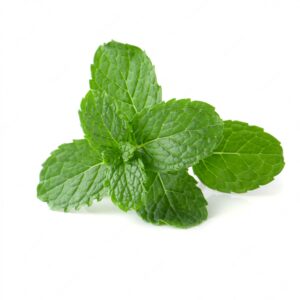The Top 5 Challenges in Developing, Managing and Using Standard Operating Procedures (SOPs) and Solutions

Are you a senior manager in charge of process upgrades in your company? If so, one of the most important aspects of your job will be creating a procedure that reduces human mistakes.
Numerous businesses’ experiences show that human mistake is a significant cause of operational inefficiency and significant financial losses. However, since process problems frequently result in them, you have the ability to influence and alter them. Most errors can be avoided by writing SOPs that are clear and concise. The benefits of eliminating human error by developing successful SOPS are demonstrated below:
SOPs are present in most drug development, testing, manufacturing, and marketing programmes, and these programmes recognise their value. However, there are other aspects of SOP formulation, maintenance, training, and structure that are poorly understood, leading to a pile of regulatory compliance problems that are discovered during FDA audits. Some of the most prevalent problems with the development, administration, and use of SOPs are discussed in this article.
-
Insufficient SOPs
SOP development is mandated by regulations. Requirements for SOPs are regularly mentioned in the FDA, ISO, and ICH recommendations. The requirements are outlined in many sections of Title 21 of the Code of Federal Regulations (CFR). Here is an example:
According to 21 CFR 211.100, there must be established production and process control processes in place to ensure that drug products are what they claim to be in terms of identification, strength, quality, and purity.
The proper organisational units must design, review, and approve these written procedures. The quality control unit must also review and approve them.
The various production and process control functions must be carried out in accordance with written production and process control procedures, which must be recorded as they are carried out.
Any deviation from the specified processes needs to be documented and explained.
An overview of the SOPs mandated by 21 CFR Part 211 is provided in The Federal Register (Volume 76, No. 188 / Wednesday, September 28, 2011). The following 25 crucial process operations call for SOPs:
Section 211.22(d): responsibilities and practices of the quality control unit
Section 211.56(b): Sanitation practices
Section 211.56(c): Use of acceptable rodenticides, insecticides, fungicides, and sanitizing agents is required
Section 211.67(b): Equipment cleaning and maintenance
Section 211.68(a): The proper operation of automatic, mechanical, and electronic equipment
Section 211.80(a): Receiving, identifying, storing, handling, sampling, testing, and approval or rejection of components and drug product containers or closures
Section 211.94(d): Standards or standards, test procedures, and techniques for cleaning sterilizing, and treating drug product containers and closures to eliminate pyrogenic characteristics
Section 211.100(a): Production and process control
Section 211.110(a): Sampling and testing of drug products and in-process ingredients
Section 211.113(a): Preventing undesirable microorganisms in drug items that are not required to be sterile
Section 211.113(b): Prevention of microbiological contamination of drug items claiming to be sterile, including verification of any sterilization procedure
Section 211.115(a): System for reprocessing batches that don’t meet standards or specifications, ensuring that reprocessed batches adhere to all recognized standards, specifications, and characteristics
Section 211.122(a): Receiving, identifying, storing, handling, sampling, inspecting, and/or testing of labelling and packaging items
Section 211.125(f): Control methods for labeling issuance
Section 211.130: Packaging and labelling operations, avoidance of mix-up and cross-contamination, handling of filed drug product containers held aside and unlabeled, and identification of the drug product with a lot or control number that enables determination of the history of manufacture and control of the batch
Section 211.142: Storage
Section 211.150: Drug product distribution.
Section 211.160: Lab controls
Section 211.165(c): testing and release for distribution
Section 211.166(a): Stability testing
Section 211.167: Requirements for special tests.
Section 211.180(f): Notification of inquiries, recalls, reports of inspectional observations, and any regulatory actions pertaining to good manufacturing practice to the relevant officials
Section 211.198(a)-Written and oral complaint procedures, including quality regarding failures to meet specifications and serious and unanticipated adverse drug experiences
Section 211.204: Holding, testing, and reprocessing of returned drug items
and
Section 211.208: Recycling of drug products.
-
Failure to follow the company’s own SOPs
Regulatory agencies necessitate the establishment of SOPs, but typically don’t offer instructions on the format or a particular style or content. Companies are free to develop them in the way that they feel will best provide process control and compliance. An organization should follow its SOPs once they have been defined. SOPs are written protocols that outline the entire process of performing a task. It is a mechanism for the organization to communicate its commitments to the conduct and procedure. Organizations must demonstrate that they are following such practices. Most audit results are attributable to a failure to follow the company’s own procedures.
-
Ineffective SOPs
While following a set of written instructions may seem simple, if the instructions are unclear or dated, deviations from the intended course sometimes occur. FDA audits frequently find these mistakes.
-
Improper SOP upkeep
With experience and time, procedures evolve. However, a lot of businesses neglect to formally update their present SOPs to reflect the procedural changes. The following are a few typical maintenance issues:
- Failure to apply the procedural modifications
- Failure to appropriately annotate the SOP with the version number, effective dates, and classifications. Failure to include the history of revisions.
- Lack of a comparison of historical and contemporary changes
- Lack of adequate pagination, headers, footers, formatting, and other controls
- absence of a written document with formal definitions for amending SOPs. Documenting the procedures for updating current SOPs, developing new ones, and educating, retraining, and approving staff in all activities is essential.
- SOPs are not properly accessible to relevant workers when they need to refer to them.
- Access to the SOPs should only be granted to authorised individuals due to improper management and oversight.
-
Insufficient SOP training
SOPs that are carefully crafted are meaningless if staff members are not properly taught. The management must make sure that every member of the affected staff has read and comprehended the SOPs for which they are accountable. Key training records are of great importance to the majority of auditors. By asking the employee to clarify what is in the SOP and demonstrate how the task was performed, they may also determine how well the individual understands the processes. Following are some methods to gauge staff compliance with SOPs:
- distributing tests
- Choosing mentors
- conducting performance evaluations and recording them
- using forms and checklists to keep track of work and assure compliance
- putting a signature and a date on any paperwork related to SOPs
Establish a process for deciding which processes or procedures need to be recorded.
- well-versed in the compliance requirements
- Become informed about the activities.
- Be familiar with the internal workings of things.
- Be a subject-matter expert who utilises the procedure or does the work.
- Adopt a team approach, especially for procedures with multiple tasks where the combined knowledge of many people is essential.
- One or more individuals with the necessary training and process experience should review and validate the SOPs.
- Before finalising, have someone other than the original author review draught SOPs.
- As per the organization’s quality management plan, have the SOPs authorised.
- SOPs should be periodically reviewed.
- Update and re-approve SOPs if there is a process change.
- Keep a master list of SOPs that includes the SOP number, version number, date of issuance, title, author, status, organizational division, branch, and section, as well as any historical data on previous versions.










